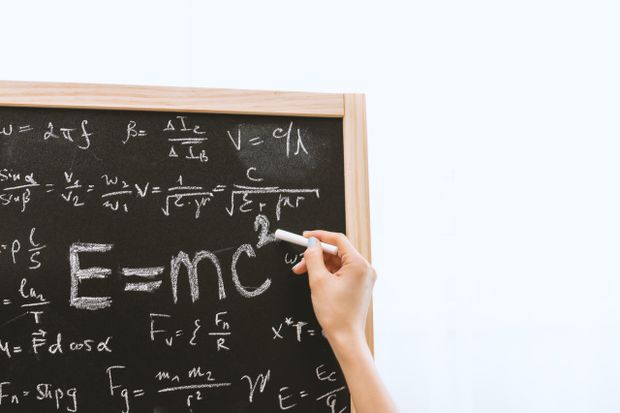Physics is a key science that helps us understand the world around us. It explains why the world works as it does and defines every interaction, big or small. Seemingly unconnected phenomena can be unified only using physics.
(If you're studying physics in school or college, check out our Physics 101 flashcards. We created this collection of NGSS-compliant smart flashcards to help you master those crucial physics concepts as fast and painlessly as humanly possible, helping you crush that next test or exam!)
6 of the greatest modern physicists
Since physics defines so much in our lives, it’s important to recognize the famous modern physicists who have been working to discover more about the physical world. With that, we share with you just some of the greatest modern physicists, as well as their discoveries that have changed the way we see the world.
1. Stephen Hawking
Stephen Hawking has been widely recognized as one of the best minds in physics today and is widely recognized as one of the most famous modern physicists. He won many titles for his achievements, including the Presidential Medal of Freedom, the highest civilian award in the U.S. Of his many notable theories, Hawking is most famous for developing the theory that black holes emit radiation (known as Hawking radiation) and his work on gravitational singularity theorems in developing the framework for general relativity. Hawking also wrote the book explaining many important concepts of cosmology in layman’s terms, called A Brief History of Time, that became an international and New York Times bestseller. He was the subject of the 2014 film The Theory of Everything.
2. Steven Weinberg
A Nobel laureate in Physics, Steven Weinberg has conducted pioneering research across many fields within physics, including quantum field theory, gravitational theory, supersymmetry, superstrings, technicolor physical theories, and cosmology. Weinberg is most known for his work on creating a unified theory of the weak and electromagnetic interactions between elementary particles, which earned him a Nobel prize alongside Sheldon Lee Glashow and Abdus Salam. This work was ultimately experimentally proven and unified two of the four fundamental forces of nature. According to the American Philosophical Society, which awarded him the Benjamin Franklin Medal for Distinguished Achievements in Sciences, Weinberg is “considered by many to be the preeminent theoretical physicist alive in the world today.”
3. Edward Witten
Known primarily for his work in string theory, Edward Witten has been named by Time and other organizations and publications as “the world’s greatest living theoretical physicist,” thanks to his insights into the fundamental mathematical mechanics of string theory. Witten discovered that various string theories could be mapped onto one another using certain rules, thus developing the most important mathematical underpinnings of string theory today. Since his work is so grounded in math, Witten has garnered a position of importance in the field of mathematics as well. He is currently the only physicist to have been awarded a Fields Medal (sometimes called the Nobel Prize for math).
4. Alan Guth
Alan Guth is best known as the originator of the theory of cosmic inflation. This theory explains why the universe appears flat, homogeneous, and isotropic, and if proven correct, would explain the large-scale structure of the universe that emerged after the Big Bang. So far, cosmic inflation remains a theory, but evidence may have emerged recently that would help confirm it as a reality, cementing Guth’s place among the greatest modern physicists.
5. Peter Higgs
Another Nobel laureate, Peter Higgs is most famous for his research on the Higgs mechanism, which predicted the particle named after him: the Higgs boson. According to the Standard Model of particle physics, the Higgs mechanism defines the way that fundamental particles acquire their masses, making it crucial to all theories of particle physics. When research at the CERN Large Hadron Collider ultimately demonstrated the existence of the Higgs boson, the discovery earned Higgs a Nobel Prize in Physics in 2013.
6. Freeman Dyson
Despite being semi-retired, Freeman Dyson still continues to frame scientific discussions in physics. Over the course of his career, he developed a number of groundbreaking physics concepts and theories, including the Dyson sphere, the Dyson operator, the Dyson series, the Schwinger-Dyson equation, Dyson conjecture, the Dyson tree, Project Orion, and TRIGA. As you can see, his collective work is prolific, and while it is difficult to choose just one contribution that has made him so important, he is perhaps best known for demonstrating the equivalence of Richard Feynman’s diagrams and Julian Schwinger and Sin-Itiro Tomonaga’s operator method. Along with further developing much of Feynman’s work, Dyson also proved that the exclusion principle plays the main role in maintaining the stability of bulk matter.
Physicists do matter
Studies in physics today would be nowhere without the scientists who came before and made some of the most important discoveries of all time. These six famous modern physicists have changed the world’s understanding of physics dramatically in recent years, yet they are only some of the key scientists defining physics today.
Inspired? Check out the Physics flashcards in the Brainscape marketplace to start learning physics today and better understand our world.
